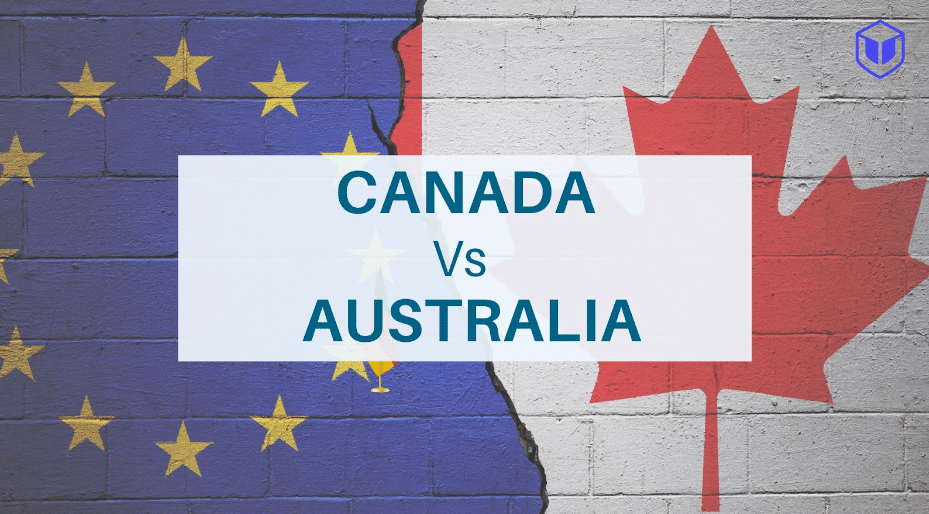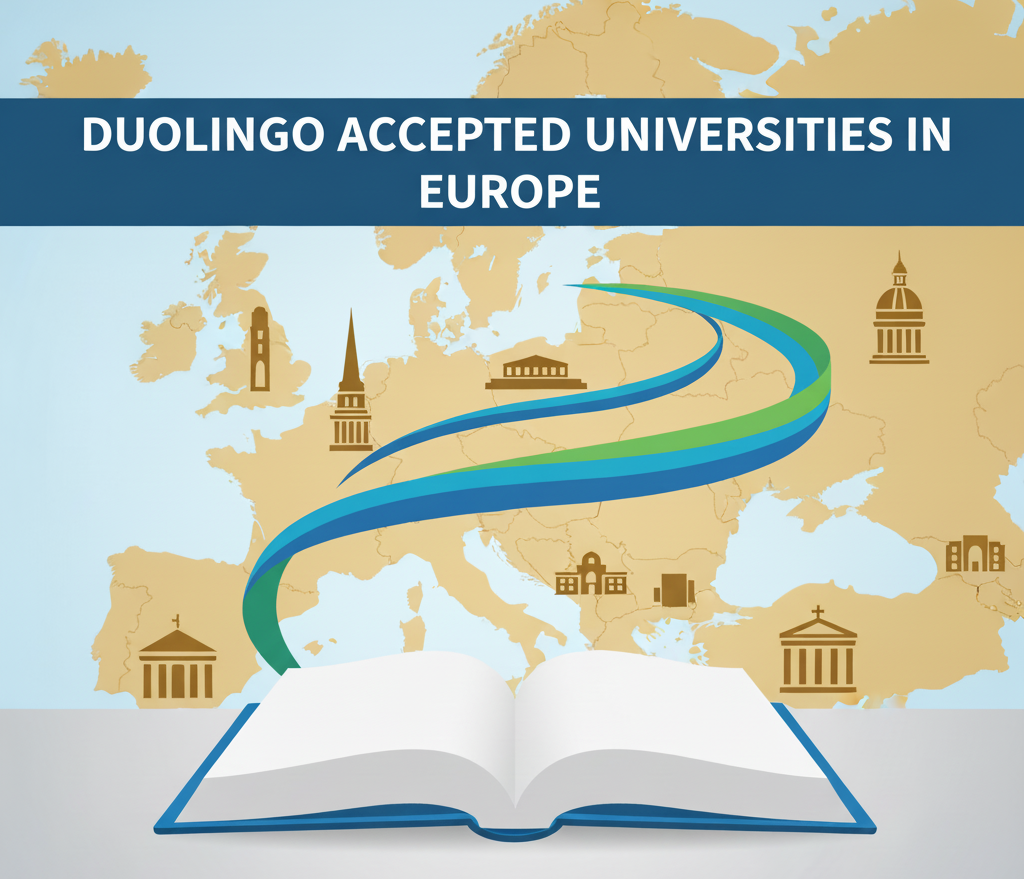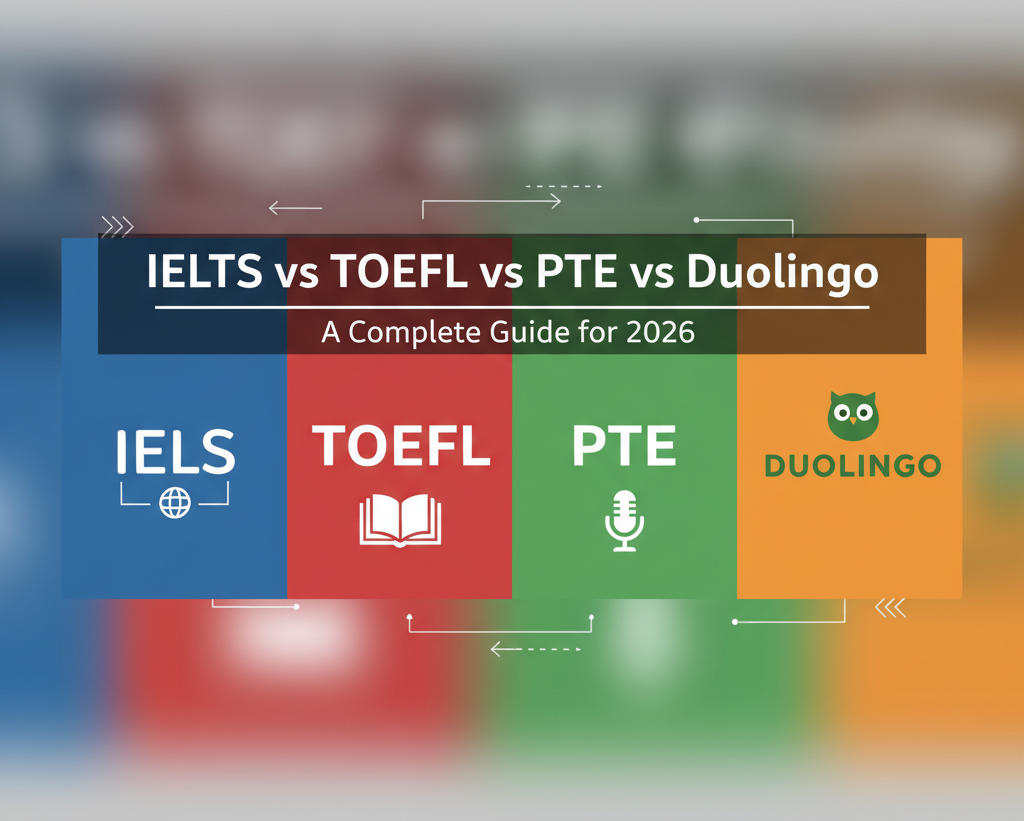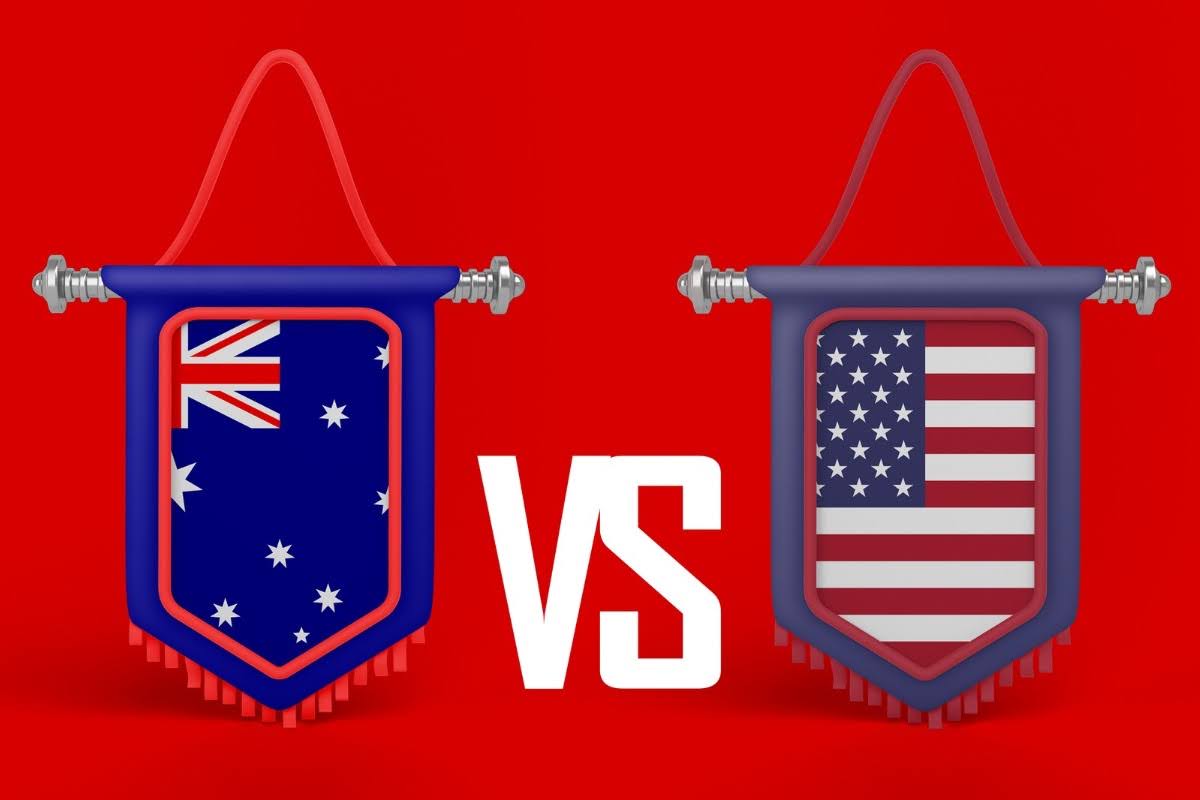Before you choose a university for your 2026 intake, you must first choose a visa strategy: Canada’s high-risk/high-reward pathway or Australia’s stable, high-salary route. Recent policy changes from Canada’s student cap to Australia’s visa reforms have created uncertainty, requiring you to weigh visa stability against long-term opportunity.
This decision will significantly influence your long-term Permanent Residency prospects and financial outcome. Your strategic choice involves assessing a clear trade-off: pursuing Canada’s faster PR track, which currently involves navigating a highly competitive visa environment (especially for undergraduate programs), or opting for the stability of Australia, despite the higher required financial proof (AUD 29,710 vs. CAD 20,635). You require clear, data-backed guidance to strategically compare these critical factors.
This guide provides the necessary data and comparison to help you precisely determine whether Australia or Canada aligns best with your long-term goals.
| Factor | Canada (2026 Outlook) | Australia (2026 Outlook) |
|---|---|---|
| Visa Risk for Indian Students | Extremely High (Cap, high refusal rates for UG/Diploma) | Moderate/Stable (Higher approval rates 70%) |
| Pathway to PR | Faster (3 years to citizenship) | Slower (4 years to citizenship, occupation-dependent) |
| Cost of Living | Lower (Significant savings in secondary cities) | Higher (Especially in Sydney and Melbourne) |
| Average Post-Study Salary | CAD 70k–100k (₹45–64 lakh) | AUD 85k–120k (₹50–71 lakh) |
Visa Approval Chances: Canada vs. Australia Success Rates
Choose your dream country
When do you want to study abroad?
What's your highest level of education?
Select you current city
How Leap will help you
Personalised University Shortlist
Express Applications with Quicker Admits
End-to-End Application Support
The most critical factor for the 2026 intake is the visa approval climate. As a student, you must prioritise the country that offers the most predictable pathway forward.
Canada: The Strategy of Merit (Focus on Post-Graduate)
Canada is implementing an intake management framework for 2026, shifting its focus from volume to high-value talent.
- Study Permit Cap: The national target for new study permits in 2026 is 155,000 new arrivals, a significant reduction from previous years. This has intensified competition and led to the high refusal rates for undergraduate and diploma applicants.
- The Master's & PhD Advantage: Starting January 1, 2026, students applying for Master's and Doctoral programs at public universities are exempt from the Provincial Attestation Letter (PAL) requirement. This creates a smoother, faster, and more predictable pathway for students with strong academic backgrounds.
- Required Financial Proof: The upfront financial requirement remains high: a GIC (Guaranteed Investment Certificate) of CAD 20,635 (approximately ₹13.3 lakh) for living expenses alone.
Australia: A Stable & Clearer Path
Australia's system, while introducing a stricter 'Genuine Student' test, offers greater consistency and predictability for the majority of Indian applicants.
- Approval Rate: Approval rates for Indian applicants generally range around 70%, reflecting a more welcoming and transparent process.
- Financial Proof: The required proof of funds (living expenses) is higher than Canada's GIC, at AUD 29,710 (approximately ₹17.7 lakh).
- Processing Time: Australia typically offers faster and more predictable processing times for both student and skilled worker visas.
Strategic Visa Comparison: Risk Level by Program (2026)
| Factor | Canada (2026 Strategy) | Australia (2026 Strategy) |
|---|---|---|
| Undergraduate/Diploma | High Risk (Requires PAL, faces cap and high refusal rates) | Moderate Risk (Requires GST, stable approval rates) |
| Master's/PhD Applicants | Low Risk (Exempt from PAL) | Low/Moderate Risk (High approval rates, clear policy) |
| Upfront Financial Burden | CAD 20,635 (₹13.3 lakh) | AUD 29,710 (₹17.7 lakh) |
Expert Tip: If you are applying for a Master's or PhD program, Canada offers a strategic advantage due to the PAL exemption. If you are an undergraduate or college-level applicant, Australia currently provides a more stable and lower-risk environment for visa approval.
Financial Planning: Comparing Cost of Living and Tuition (Canada vs Australia)
When comparing Australia cost of living vs Canada, the answer is nuanced. While Australia has higher average wages, Canada is cheaper overall, especially when planning your living situation strategically.
Tuition Fees: The Upfront Cost
The cost of living in Canada is generally lower than those in Australia, reducing the initial financial strain on Indian families.
| Expense Category | Canada (CAD) | Approx. Cost in INR | Australia (AUD) | Approx. Cost in INR |
|---|---|---|---|---|
| Avg. Annual Tuition Fee | 20,000 – 35,000 | ₹12.89 – ₹22.55 lakh | 25,000 – 45,000 | ₹14.88 – ₹26.78 lakh |
| Total Annual Estimated Cost | 30,600 – 50,900 | ₹19.72 – ₹32.80 lakh | 43,500 – 70,800 | ₹25.89 – ₹42.18 lakh |
Living Expenses: City-Level Savings Canada vs Australia
The true advantage of Canada's affordability is seen outside of its two largest cities, Toronto and Vancouver.
- Canada's Advantage: Secondary Canadian cities like Montreal or Calgary offer substantially lower rent and utilities. For example, a 1-bedroom apartment in Montreal can cost nearly half of what it would cost in Sydney.
- Australia's Drawback: Australia's job market is heavily concentrated in its most expensive cities (Sydney and Melbourne), making it harder to find the balance between work and affordable living.
| Expense Category (Monthly Rent - 1BR) | Sydney, AU (AUD) | Toronto, CA (CAD) | Montreal, CA (CAD) |
|---|---|---|---|
| Average Rent | AUD 2,600 - 3,406 | CAD 1,700 - 1,800 | CAD 1,200 - 1,400 |
Expert Tip: If budget is your primary constraint, Canada is better. By choosing a city like Montreal or Calgary, you can actively reduce the Australia cost of living vs Canada in your favour.
Top Universities in Canada vs Australia in 2026
In 2026, both Canada and Australia feature prominently in global university rankings. Canada’s universities are known for research-driven education and strong academic outcomes, while Australia’s institutions rank high for employability and industry connections. These rankings reflect each country’s growing appeal among Indian students planning international studies.
Top Universities in Canada in 2026
Canada’s top universities rank among the best in the world for quality education and research. For those planning to study in Canada, institutions like the University of Toronto and McGill are preferred by Indian students for programs in Engineering, Computer Science, and Business. With moderate tuition fees and strong scholarship opportunities, Canada remains a practical and affordable destination for globally recognised education.
Here are the top universities in Canada you must consider:
| University (City) | QS World University Ranking 2026 |
|---|---|
| McGill University (Montreal) | 27 |
| University of Toronto (Toronto) | 29 |
| University of British Columbia (Vancouver) | 40 |
| University of Alberta (Edmonton) | 94 |
| University of Waterloo (Waterloo) | 119 |
*Source: QS World University Rankings 2026: Top global universities
Top Universities in Australia in 2026
Australia continues to be a global leader in higher education, with several universities ranking among the top 50 worldwide. For Indian students planning to study in Australia, the country offers a strong mix of academic excellence, modern facilities, and career-focused programs.
Here are the top universities in Australia you must consider:
| University | QS World University Ranking 2026 |
|---|---|
| The University of New South Wales (Sydney) | 20 |
| The University of Sydney (Sydney) | 25 |
| Australian National University (Canberra) | 32 |
| Monash University (Melbourne) | 36 |
| The University of Queensland (Brisbane) | 42 |
Source: QS World University Rankings 2026: Top global universities
Whether you study in Canada or Australia, your qualification will be globally recognised and industry-relevant. Canadian universities such as the University of Toronto and McGill are renowned for research intensity and affordable public funding, while Australian institutions like UNSW and the University of Sydney rank among the top 30 worldwide for graduate employability.
For Indian students, both destinations provide strong pathways to post-study work
Career Potential: Salary vs. Part-Time Earnings
As a student, you are making an investment. Understanding the potential return on that investment (ROI) in terms of salary and work opportunity is crucial.
Part Time Jobs in Canada vs Australia
Your part-time job helps manage the cost of living. Both countries limit part-time work hours (20 hrs/week or 48 hrs/fortnight). However, the earnings differ significantly:
- Australia's Advantage: Australia offers a significantly higher average hourly wage (AUD 24.10 or ₹1,434 per hour).
- Canada's Wage: Canada's average is lower (CAD 17.20 or ₹1,108 per hour).
For maximizing immediate part-time income, Australia is better, as the higher minimum wage helps offset the higher Australia cost of living vs Canada.
Fresher Salary Comparison
Students view their degree as a high-return investment. Understanding the starting salaries for fresh graduates (0–2 years experience) shows which country offers a better financial return right after graduation.
| Sector | Canada (Entry-Level Estimate) | Australia (Entry-Level Estimate) | Key Insight |
|---|---|---|---|
| Information Technology | CAD 70k–80k (₹45–52 lakh) | AUD 70k–90k (₹42–54 lakh) | Australia offers a higher starting range for competitive roles. |
| Engineering (Civil/Mech) | CAD 55k–70k (₹35–45 lakh) | AUD 60k–75k (₹35–44 lakh) | Australia is slightly higher for specialized roles like Mining/Construction. |
| Average Graduate Salary | $\sim$CAD 54,621 (₹35.2 lakh) | AUD 65,000 (₹38.7 lakh) | Australia offers a higher average starting point. |
Expert Tip: Australia offers higher competitive starting salaries across most sectors and a higher average graduate salary. This makes Australia the better choice for maximizing immediate earnings and accelerating your return on investment.
Post-Study Work and Permanent Residency Pathways
Your choice of country must align with your ultimate goal: returning home with global experience, or achieving Permanent Residency (PR).
Post-Study Work Permit (PSWP)
- Canada (PGWP): Up to 3 years of open work permit. This flexibility allows you to gain the skilled work experience necessary for the Express Entry PR stream.
- Australia (TGV): Ranges from 2–4 years. The Temporary Graduate Visa (TGV, Subclass 485) has two main streams:
- Post-Higher Education Work Stream: For Bachelor's/Master's graduates, it grants 2–3 years of unrestricted work rights and does not initially require an occupation link.
- Post-Vocational Education Work Stream: For trade/diploma graduates, it must be closely related to an occupation on the skilled list, and often requires a skills assessment.
PR Comparison: Speed vs. Selectivity
When debating Australia or Canada which is better for migration, Canada wins on speed and accessibility.
| PR Pathway Criteria | Canada (Express Entry/PNP) | Australia (Skilled Visas 189/190) |
|---|---|---|
| Primary Route | Express Entry (Points-based, highly inclusive) | Skilled Migration (Occupation-based, more selective) |
| Minimum Skilled Work Exp. | 1 Year Continuous (in Canada) | 3 Years (occupation-specific, high bar for entry) |
| Time to Citizenship | 3 years of physical presence as PR | 4 years of residence as PR |
| Application Fee (Approx.) | CAD 1,365 (Lower initial cost) | AUD 4,240 (Substantially higher cost) |
Expert Tip: For the smoothest, fastest path to permanent settlement and citizenship, Canada is the undisputed leader. Its system is specifically designed to transition international graduates to PR.
Canada vs Australia: Education Quality and Lifestyle Factors
While policy and cost dominate, academic quality and lifestyle determine your day-to-day comfort and long-term adaptation.
University Focus
| Country | Key Strength | Top Universities (QS 2026) |
|---|---|---|
| Canada | Research Intensity, Affordable Public Funding | McGill (#27), U of T (#29) |
| Australia | Employability, Industry Connections | UNSW (#20), U of Sydney (#25) |
Climate and Adaptability
- Canada: Defined by its long, harsh winters (-10°C or lower in major provinces). It suits students who value structured, community-focused safety and multiculturalism.
- Australia: Offers a consistently warm and sunny climate. While winters are mild (10–15^C) , be prepared for hot summers where temperatures frequently exceed 25^C and can rise sharply into the high 30s or 40^C during heatwaves. The lifestyle is relaxed and outdoor-oriented, often leading to easier adaptation for Indian students.
Both countries offer a high quality of life. If climate comfort is essential for you, Australia is better. If safety, affordability, and cultural inclusivity are your priorities, Canada ranks higher.
Conclusion:
Deciding between Canada and Australia requires you to focus on your long-term plan.
- If your goal is affordability, research-driven study, and the quickest path to Permanent Residency, Canada is the right fit, provided you can present an extremely strong application to overcome the visa hurdles.
- If you value visa stability, higher earning potential, and a career-focused degree, Australia will suit you better.
Both countries offer world-class opportunities. To navigate the visa cap, compare the best university options for your profile, and receive end-to-end guidance for your application, connect with LeapScholar expert counsellors today.
Frequently Asked Questions (FAQ’s)
-
Which is better to live, Canada or Australia?
Both countries offer an exceptionally high quality of life, but they cater to different preferences. Canada is generally perceived as safer and more affordable, especially in secondary cities, with a community-focused, diverse culture. Australia boasts a warmer climate, a relaxed outdoor lifestyle with beaches, and better ratings for weather and recreation. The choice depends on whether you prioritize a cooler climate and affordability (Canada) or a warm climate and outdoor living (Australia).
-
Which country is better for Indians, Canada or Australia?
The better country depends entirely on your primary goal. Canada is better if you prioritize affordability, lower tuition costs, and a faster path to Permanent Residency (PR) via the Express Entry system. Australia is better if you prioritize career experience, higher salaries, faster visa processing, and a warmer climate. The decision should be based on whether you value long-term settlement (Canada) or immediate career growth (Australia).
-
Which country is safest, Canada or Australia?
Both are globally recognized as extremely safe countries, though Canada holds a slight edge in some global rankings. In the 2025 Safest Places to Travel report, Australia ranked #2 and Canada ranked #3 globally. Canada also consistently ranks highly for safety from violent crime, transportation safety, and inclusivity, making it generally perceived as one of the world's safest nations.
-
Why choose Australia over Canada?
Students choose Australia for its stable visa processing climate and higher career rewards. Australia's universities are highly ranked for job-readiness and industry links, offering clear pathways to post-study work through the Temporary Graduate Visa (2–4 years). Additionally, the warmer climate and higher average wages are strong factors for Indian students prioritizing lifestyle and immediate earning potential.
-
Is Canada richer than Australia?
No, Australia is generally considered richer than Canada when measured by economic output per person. The GDP (nominal) per capita projected for 2025 shows Australia ahead of Canada, with Australia ranked 15th at $65.95 thousand and Canada ranked 10th at $54.93 thousand. This metric is a key indicator of a nation's average income and overall economic health, suggesting a higher level of affluence per person in Australia.
-
Which has a higher salary, Canada or Australia?
Australia generally offers higher average salaries and superior part-time earning potential. As of 2025, Australia's average hourly wage is around AUD 24.10 (₹1,434), compared to Canada's CAD 17.20 (₹1,108). While Australia’s cost of living is higher, the superior earning potential in skilled sectors like IT and Engineering often compensates for this difference, leading to a higher disposable income for high-earning professionals.
















Have Questions? Get Guidance to reach your Dream University
Connect with India's finest counsellors and biggest study abroad community.
Get Guidance